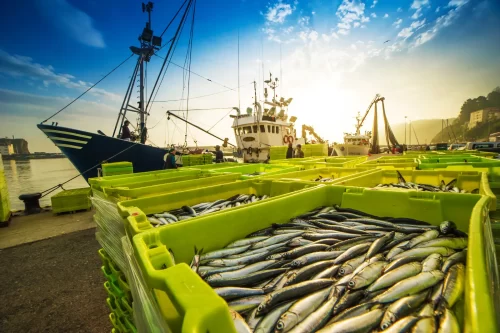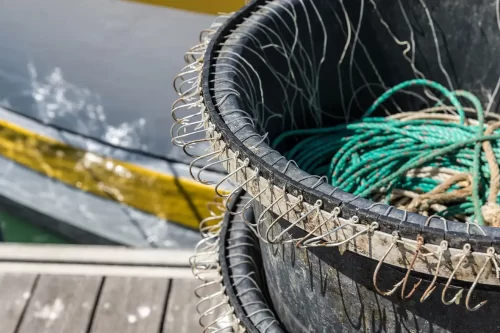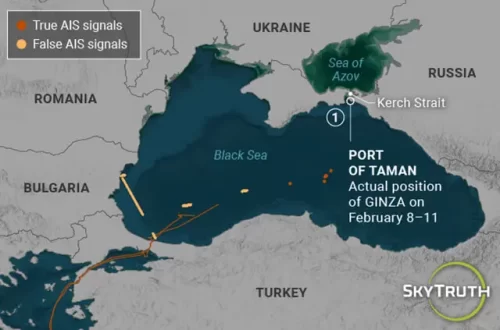Staring at the Global Fishing Watch map, your eye is inevitably drawn to patterns of vessels that move together. These fishing patterns are most evident in the world’s longline fleets, which you can sometimes see moving north and south, as temperatures change, following migrations of fish.
These fishing vessels are moving in “fleets” with similar behavior. These behaviors include fishing in the same region of the ocean at the same time, but may also include meeting up with similar transshipment vessels or visiting the same ports. Often, these fleets are targeting the same species of fish.
Determining which fleet a vessel is part of may give us clues about the individual vessel’s behavior and its ownership. For instance, if lots of vessels within a fleet are known to be engaging in labor violations, we might want to investigate the other vessels in that same fleet. It may also tell us what kinds of fish a given vessel is targeting, and it can help us understand the global patterns of fishing behavior.
What makes a fleet a fleet?
There is, though, one problem. What, exactly, is a fleet? A group of vessels may cluster together for a few months, and then disperse and fish in different regions for the rest of the year. Sometimes vessels with the same flag state fish together in a cluster, and sometimes a cluster of vessels is from lots of different flag states. The exact definition may vary.
Our machine learning engineer, Tim Hochberg decided to tackle this challenge. Can we automatically group fishing vessels into fleets of similar behavior? After playing around with a few algorithms, and tweaking many different parameters, we come up with, what we think is the first automatic grouping of fishing vessels into different fleets.
The algorithm Tim used, HDBSCAN, computes the distance between a series of points and automatically groups these points into clusters. The algorithm essentially looks for lower and higher density areas, and can intelligently group points in higher density areas. Tim used the distance between vessels in both time and space to identify fleets moving together across the oceans.
An interesting result of this fleet detection work is shown below, where you can see 40 different “fleets” operating over the past three years. The definition of “fleet” here is just vessels that fish in the same parts of the ocean at the same times, but our initial analysis suggest that they share much in common, with many fleets being dominated by a single flag state. Each marker on the map is an individual vessel’s position on a given day. You can see how various fleets move together, come apart and regroup over time. You can also see many light grey circles, which are vessels that were not obviously grouped into a “fleet.”
Revealing relationships
For each vessel, we can now identify which fleet it operates with, or if it doesn’t operate with any fleet. In the future, when you look up a vessel on our site, we will be able to display vessels that operate in the same fleet. This information, along with information about what ports a vessel visits, what transshipment vessels it meets up with, and where it fishes, can help improve transparency in global fishing activity and support better governance. We are already sharing this fleet information with our research partners to investigate.
To read more about the technical details of how we grouped these vessels into fleets, you can read this post by Tim, our machine learning engineer, or even go to the github repository to see the code.


